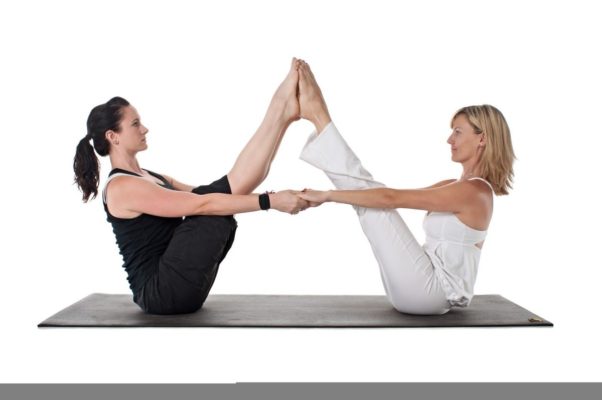The 8 best yoga poses for tennis player

The 8 best yoga poses for tennis player
the arrival of spring and warmer weather, tennis fans are ready to hit the courts. During a recent trip to the malavades , I took up tennis again after a 20-year hiatus and noticed sore muscles that I forgot existed! So, as usual, I turned to yoga to ease my aching muscles and to connect with my breath while playing this cardiovascularly intensive sport. When designing a yoga program for a specific activity, whether tennis, cycling, or skinning it’s helpful, to begin with a review of the muscles we use while engaging in the sport. In this case, it is no over-exaggeration to say that tennis requires the use of all of our muscle groups. While it may appear that the upper body muscles are the primary movers in tennis, the lower body and core play an integral role as well. To understand how this dynamic works, we’ll have to visit our dear friend (or in my case, frenemy), physics.
Tennis requires a lot of quick moving and stopping, arm-swinging, and body-twisting on the court, all while demanding mental focus and clarity. Tennis is also a one-sided sport, where a player’s dominant side develops faster and stronger than the other. This imbalance can eventually lead to a muscular misalignment resulting in pain in the hips, legs, and knees, shoulders and back, and even the neck.
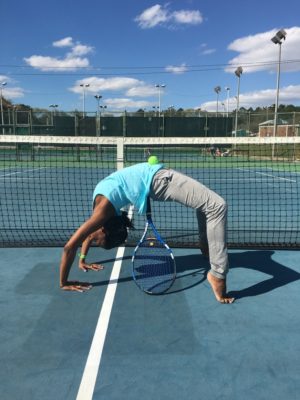
Chair (Utkatasana)
With the long laps around the court that tennis players have to do, they are required to have stamina as well as strong legs. Practicing the Chair pose will help strengthen the legs as it works on the thighs and quadriceps. With the long laps around the court that tennis players have to do, they are required to have stamina as well as strong legs. Practicing the Chair pose will help strengthen the legs as it works on the thighs and quadriceps. More importantly, holding this pose strengthens the supporting muscles of major joints, including the hips, knees, and ankles. Utkatasana helps prevent knee injuries by building stability in the knee joints.
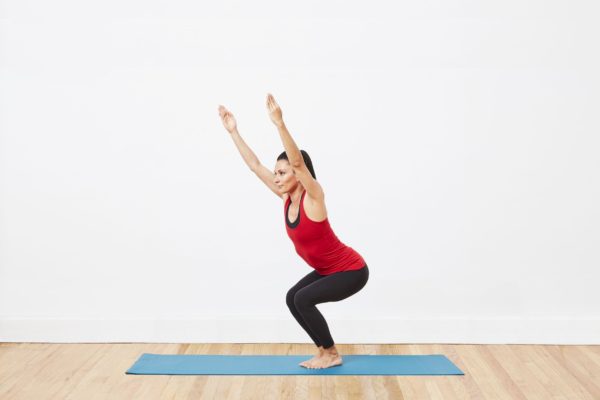
Prasarita Padahastasana (Reverse Hand-to-Foot Pose)
Why this yoga pose works for tennis players: This variation of Padahastasana focuses on stretching your inner wrists and forearms, not the backs of your legs. In practicing this pose with the hands reversed–meaning your palms are on the ground, facing your body–the stretch is focused on your wrist, which is integral in gripping the tennis racket. This stretch can also help to prevent muscular imbalance in the forearms, which will protect your wrist extensors, decreasing your risk for tennis elbow.
How to do it.
From standing, fold forward over your legs. Bend your knees deeply so you can place your hands on the floor. Rotate your forearms so your fingers point toward your feet with your palms on the ground. Root the heels of your hands into the earth and feel a stretch in the inner forearms. Optionally, step on the back of your hands/fingers to intensify the stretch as shown in the photo. Hold for 3–5 breaths.
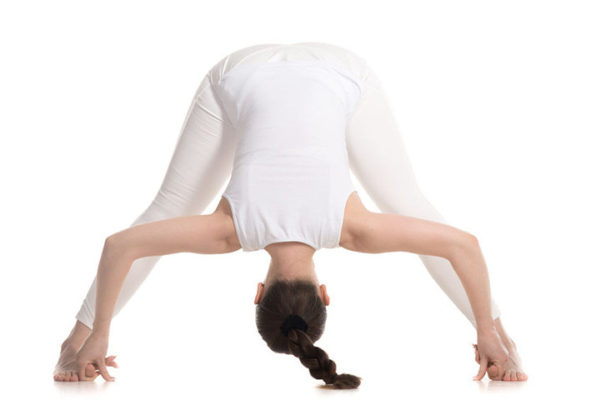
Warrior 2 (Virabhadrasana II)
Another great pose to build strong legs is the Warrior 2. Staying in Virabhadrasana II for a lengthened period of time will not only build endurance but also improve the flexibility of your knee and hip joints. This pose also opens the chest and increases your breathing capacity, which is crucial for a sport as strenuous as tennis.
How to do it .
Keep the alignment of your bent knee in check, ensuring that the heel is in line with the knee. If the knee is moved too far forward, you might run the risk of putting too much stress on your ankle joints.
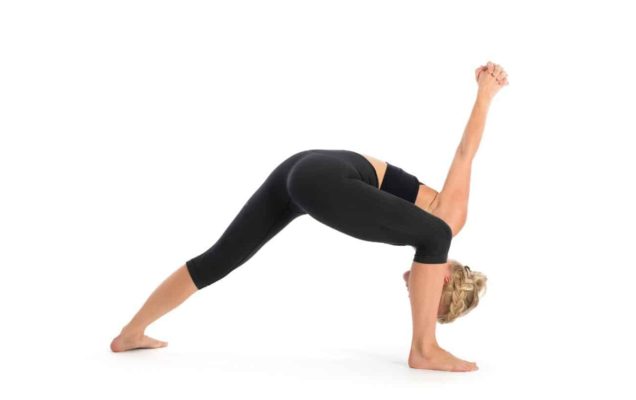
Cat and Cow Movement
For warming up and stretching your back, do a few rounds of the Cat/Cow movement.
Start on your hands and knees. While inhaling, lift your chest and tailbone towards the ceiling, and while exhaling, arch your back, press through the shoulder blades and drop your head. Feel the muscles on your back, and take notice if one side feels tighter than the other.
Adho Mukha Svanasana (Downward-Facing Dog Pose)
Why this yoga pose works for tennis players: This pose stretches the posterior legs, especially the calf muscles which provide the power to push off from the court as you move toward the ball. It also stretches and lengthens your back muscles, which often become tight from quick bursts of running.
How to do it :
From Prasaraita Padahastasana, step off your feet, turn your hands around so your fingers face forward. Step back and lift your hips into an inverted V-shape with your body. Straighten your elbows and drop your chest back toward your shins. Bend your knees slightly to take any strain off the backs of your knees. Pedal through your feet. This will enhance the stretch in the calf muscle opposite of the bent knee. Hold for 5–10 breath.
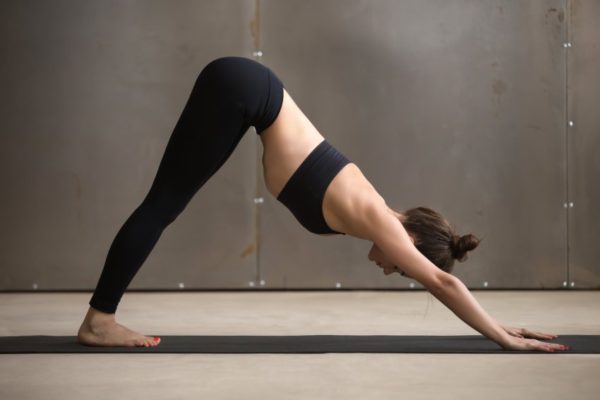
Wrist Stretch in the Cow Face Pose
There are many layers of ligaments in the wrists that can be damaged by repetitive movement. Slow Yin movements on the wrists can make these tissues thicker and stronger.
You can keep your legs in the Cow Face Pose, or come to sit on your hands and knees. Bring your palms to the floor. fingers pointing towards you. Adjust the position of your wrists so that you can bring the palm to the floor. You will feel a stretch on the inside of the forearm, and a slight pressure on the wrists. Stay for one minute. If you were sitting in Cow Face Pose, remember to also switch the legs.
Tree (Ekapada Vrksasana)
The most important element in any sports is mental focus. This is even more so in tennis, as players often play long matches that test not only their physical endurance but also their mental strength. In yoga, balancing poses are a great way to train mental focus as practitioners are required to find balance on one leg or the other. The tree pose is the most common balancing pose practiced in yoga which not only helps practitioners find balance but also stretches and opens the hips.
Tip: To improve mental focus, a good complement to a yoga practice is meditation. Try practicing a few minutes of meditation each day and see how it improves your focus on the court!
